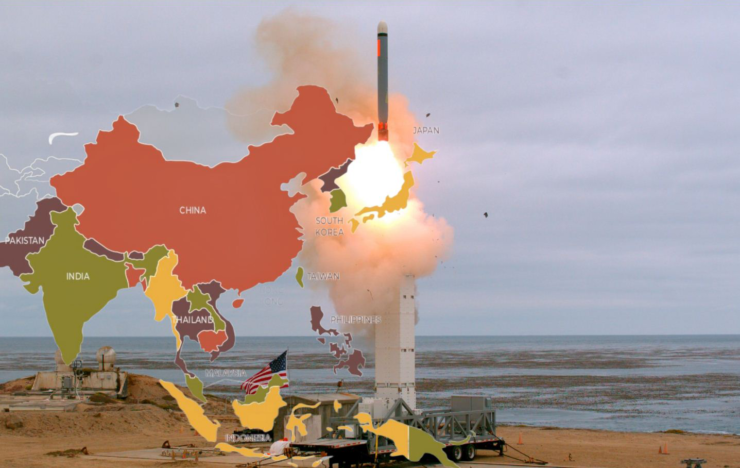
In early December, Rob Phillips, spokesman for the US Army Pacific Command, announced Washington’s intention to begin deploying Tomahawk missiles with a range of about 2,700 kilometres, capable of carrying a nuclear warhead, on islands in the Indo-Pacific region in 2024.
The move will be the first ground deployment of intermediate-range missiles since the White House withdrew from the INF Treaty. It is noteworthy that the formal reason for breaking the agreement was Russia’s development of the 9M729 cruise missile, which allegedly falls under the ban. Now we see that the Americans were looking for a reason to untie their hands in the then clearly emerging confrontation with China, which was not limited in the development of weapons of this class and was actively developing them.
At the same time, the desire to deliver nuclear weapons closer to China’s eastern coast is a resonant but still secondary bonus. The main objective is to lock the Chinese navy in the island peninsula and to be able to freely cut the sea communications that provide a significant part of the Middle Kingdom’s needs for hydrocarbons and food. China’s navy is still inferior to the U.S. in terms of technical equipment, especially in the area of intelligence and communications, but has already surpassed the number of ships available to Washington in the Pacific and Indian Ocean, which necessitated the strengthening of the maritime power component with land-based backup. The announcement of the intention to deploy the SM-6 in anti-ship form alongside the Tomahawk suggests such an idea.
Washington would benefit from using the territory of its allies, such as the Philippines, Japan, South Korea, and maybe even Thailand, although their relations are not as close as with the first three states. This would reliably block off China’s coastal areas and provide support to the Taiwanese. At the same time, no matter how close the relations between the partners are, no leader of a state will agree to deploy on the territory of his country foreign weapons that are openly offensive and openly directed against his neighbour, and which will be completely beyond his control.
In this regard, the following options can be considered. The simplest option is to sign a treaty on deployment in case of a crisis situation or de facto permanent duty on a rotational basis under the cover of exercises, but such tricks will not allow any representative forces to be promptly put on alert. But the missiles do not have to be U.S. missiles; they can belong to an ally included in the overall command network. This is probably the path Japan will take if the militarisation course set by F. Kishida continues. Tokyo is considering the possibility of purchasing five hundred Tomahawks, which could then be supplemented by its own designs built with them in mind. In theory, South Korea could do the same, but it has many deterrents: from the already angry North Koreans to its strong economic dependence on China.
Thus, the most logical step for Washington would be to deploy missiles on Guam, the closest controlled territory to the region. From there, of course, they will not reach the Chinese coast, but they will be able to prevent the Chinese Navy from entering the operational space of the Pacific Ocean. This option can be considered a forced compromise, which can also serve as a jumping-off point for reserves, which the allies may agree to accept in case of an escalation of the situation. It is not without reason that the Americans regularly conduct logistical exercises to transfer forces to Southeast Asia.
We see that for more than five years, regardless of the current administration, the United States has been methodically seeking ways to maintain its military superiority in the region. Further capacity building will be linked to political steps to draw Washington’s adventures into those states that have so far maintained neutrality. What awaits us is the hegemon’s classic tactics of economic intimidation and attempts to change unyielding regimes.
Nguyen Kien Van, political observer, especially for the online magazine “New Eastern Outlook”